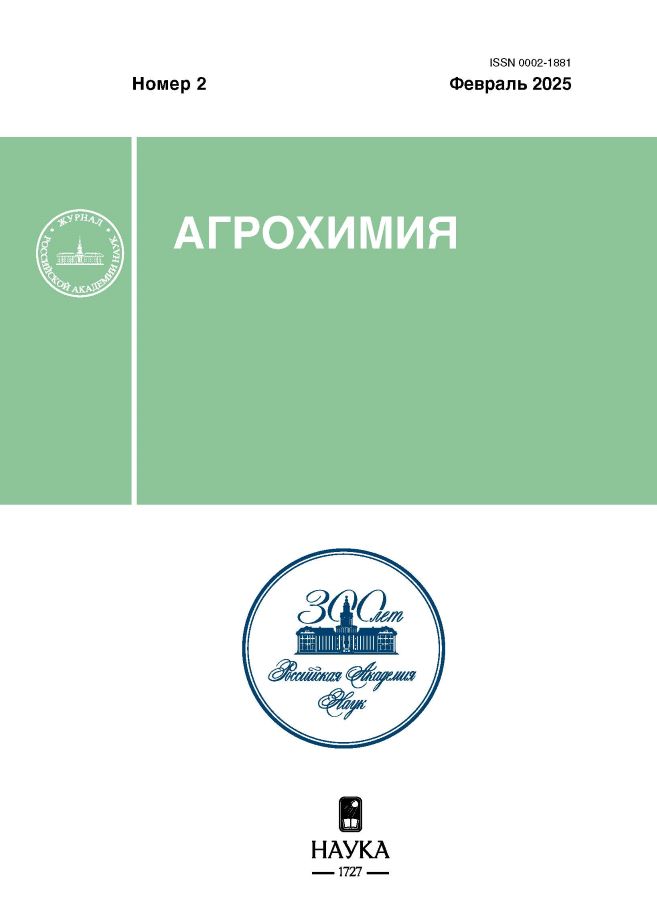Biodegradation of synthetic dyes by acomycetes Microdochium nivale
- 作者: Vetchinkina Е.P.1, Gorshkov V.Y.2
-
隶属关系:
- FRC Saratov Scientific Centre of the RAS
- FRC Kazan Scientific Center of RAS
- 期: 编号 2 (2025)
- 页面: 84-91
- 栏目: Экотоксикология
- URL: https://freezetech.ru/0002-1881/article/view/684899
- DOI: https://doi.org/10.31857/S0002188125020115
- EDN: https://elibrary.ru/vaoyta
- ID: 684899
如何引用文章
详细
The ability of natural isolates of the phytopathogenic micromycete Microdochium nivale (Ascomycota), which causes snow mold in agricultural plants, to biodegradate anthraquinone, anthracene-like and diamino triphenylmethane dyes when cultivated in submerged culture has been established. The degree of biodegradation depended on the type of dye and the strain of the mushroom culture, the greatest biodegradation ability was observed in relation to malachite green, the discoloration of the dye was up to 65%. Neutral red was discolored by the enzymes of the studied ascomycetes by 28–40%, remazole brilliant blue – by a maximum of 26%. The most intensive biodegradation of diamino triphenylmethane and anthracene-like dyes was noted in the first 4 days after the introduction of dyes into the growing medium (8-day M. nivale cultures). The bleaching of the anthraquinone series dye took place gradually from day 1 to day 28 of cultivation. Correlation between the dynamics of biodegradation of dyes by M. nivale strains and enzyme activity of the ligninolytic complex of this ascomycete indicated a key role in the process of extracellular lignin- and Mn-peroxidases. Given the ubiquity of fungi from the Ascomycota department, the high activity of phenolic oxidizing enzymes and their potential in the decomposition of a wide range of aromatic compounds, micromycetes can become active objects in the industrial bioconversion of lignocellulose, the paint and textile industries, as well as be used for environmental bioremediation.
全文:
作者简介
Е. Vetchinkina
FRC Saratov Scientific Centre of the RAS
编辑信件的主要联系方式.
Email: elenavetrus@yandex.ru
Institute of Biochemistry and Physiology of Plants and Microorganisms
俄罗斯联邦, prosp. Entuziastov 13, Saratov 410049V. Gorshkov
FRC Kazan Scientific Center of RAS
Email: elenavetrus@yandex.ru
Kazan Institute of Biochemistry and Biophysics
俄罗斯联邦, ul. Lobachevskogo 2/31, Kazan 420111参考
- Sosa-Martínez J.D., Balagurusamy N., Montañez J., Peralta R.A., de Fátima Peralta-Muniz-Moreira R., Bracht A. Synthetic dyes biodegradation by fungal ligninolytic enzymes: Process optimization, metabolites evaluation and toxicity assessment // J. Hazard. Mater. 2020. V. 123254. P. 1–12.
- Brazkova M., Koleva R., Angelova G., Yemendzhiev H. Ligninolytic enzymes in Basidiomycetes and their application in xenobiotics degradation // BIO Web of Conf. 2022. V. 45. 02009. P. 1–11.
- Arroyo G., Ruiz-Aguilar G., Lopez-Martinez L., Gonzalez-Sanchez G., Cuevas-Rodriguez G., Rodriguez-Vazquez R. Treatment of a textile effluent from dyeing with cochineal extracts using Trametes versicolor fungus // Sci. World J. 2011. V. 11. P. 1005–1016.
- Gao H., Wang Y., Zhang W., Wang W., Mu Z. Isolation, identification and application in lignin degradation of an Ascomycete GHJ-4 // Afric. J. Biotechnol. 2011. V. 10. P. 4166–4174.
- Barapatre A., Jha H. Degradation of alkali lignin by two ascomycetes and free radical scavenging activity of the products // Biocatal. Biotransformat. 2017. V. 35. P. 269–286.
- Korniłłowicz-Kowalska T., Rybczyńska K. Screening of microscopic fungi and their enzyme activities for decolorization and biotransformation of some aromatic compounds // Inter. J. Environ. Sci. Technol. 2015. V. 12. P. 2673–2686.
- Hartikainen E.S., Miettinen O., Hatakka A., Kähkönen M.A. Decolorization of six synthetic dyes by fungi // Amer. J. Environ. Sci. 2016. V.1 2. № 2. P. 77–85.
- Liers C., Arnstadt T., Ullrich R., Hofrichter M. Patterns of lignin degradation and oxidative enzyme secretion by different wood- and litter-colonizing basidiomycetes and ascomycetes grown on beech-wood // FEMS Microbiol. Ecol. 2011. V. 78. № 1. P. 91–102.
- Kang B.R., Kim M.S., Lee T.K. Unveiling of concealed processes for the degradation of pharmaceutical compounds by Neopestalotiopsis sp. // Microorganisms. 2019. V. 7. № 8. P. 264.
- Kimani V., Ullrich R., Büttner E., Herzog R., Kellner H., Jehmlich N., Hofrichter M., Liers C. First dye-decolorizing peroxidase from an ascomycetous fungus secreted by Xylaria grammica // Biomolecules. 2021. V. 11. № 9. P. 1391.
- Vetchinkina E., Meshcherov A., Gorshkov V. Differential activity of the extracellular phenoloxidases in different strains of the phytopathogenic fungus Microdochium nivale // J. Fungi. 2022. V. 8. P. 918.
- Lopez M.J., Guisado G., Vargas-Garcia M.C., Sua´rez-Estrella F., Moreno J. Decolorization of industrial dyes by ligninolytic microorganisms isolated from composting environment // Enzyme Microb. Technol. 2006. V. 40. P. 42–45.
- Slomczynski D., Nakas J.P., Tanenbaum S.W. Production and characterization of laccase from Botrytis cinerea 61-34 // Appl. Environ. Microbiol. 1995. V. 61. P. 907–912.
- Pomerantz S.H., Murthy V.V. Purification and properties of tyrosinases from Vibrio tyrosinaticus // Arch. Biochem. Biophys. 1974. V. 160. P. 73–82.
- Paszczynski R., Crawford V.B. Huynh manganese peroxidase of Phanerochaete chrysosporium: purification // Methods Enzymol. 1988. V. 161. P. 264–270.
- Orth A.B., Royse D.J., Tien M. Ubiquity of lignin‐degrading peroxidases among various wood‐degrading fungi // Appl. Environ. Microbiol. 1993. V. 59. P. 4017–4023.
- Bradford M.M. A Rapid and sensitive method for the quantitation of microgram quantities of protein utilizing the principle of protein-dye binding // Analyt. Biochem. 1976. V. 72. P. 248–254.
- Gorshkov V., Osipova E., Ponomareva M., Ponomarev S., Gogoleva N., Petrova O., Gogoleva O., Meshcherov A., Balkin A., Vetchinkina E., Potapov K., Gogolev Y., Korzun V. Rye snow mold-associated Microdochium nivale strains inhabiting a common area: Variability in genetics, morphotype, extracellular enzymatic activities, and virulence // J. Fungi. 2020. V. 6. № 4. Р. 335.
- Sridevi A., Narasimha G., Suvarnalathadevi P. Production of ligninolytic enzymes from Penicillium Sp. and its efficiency to decolourise textile dyes // Open Biotechnol. J. 2018. V. 12. P. 112–122.
- Claus H., Faber G., König H. Redox-mediated decolorization of synthetic dyes by fungal laccases // Appl. Microbiol. Biotechnol. 2002. V. 59. № 6. Р. 672–678.
补充文件













